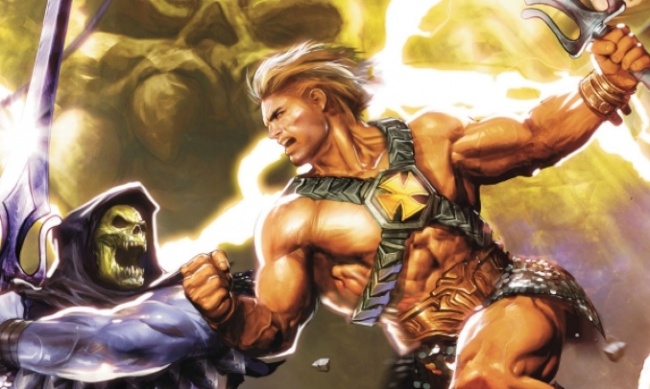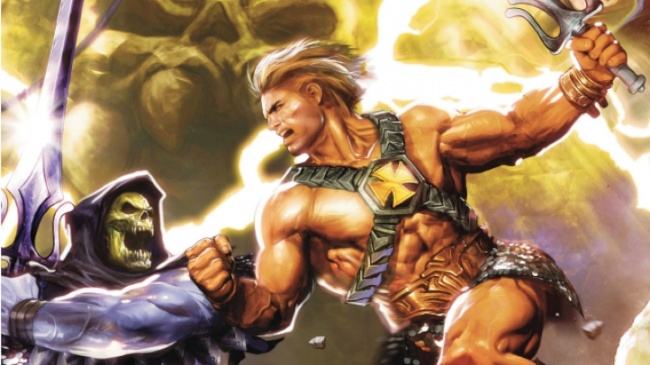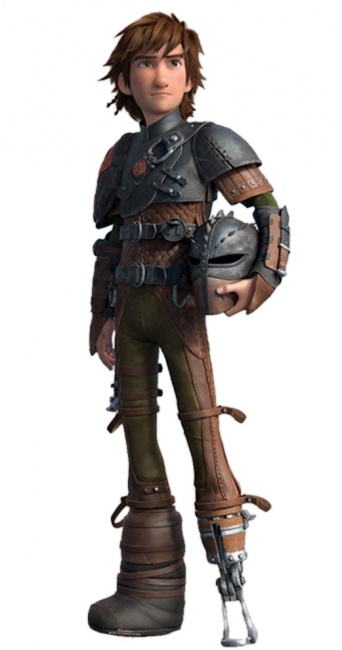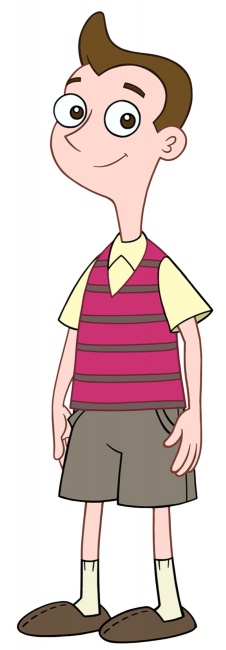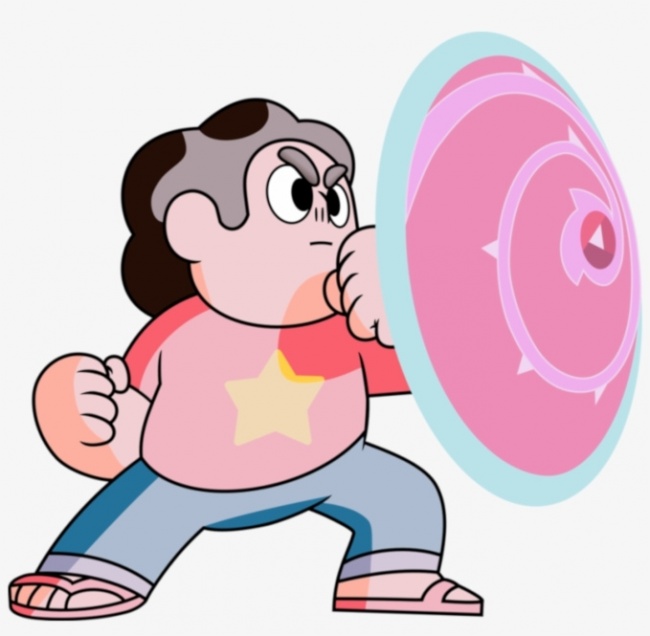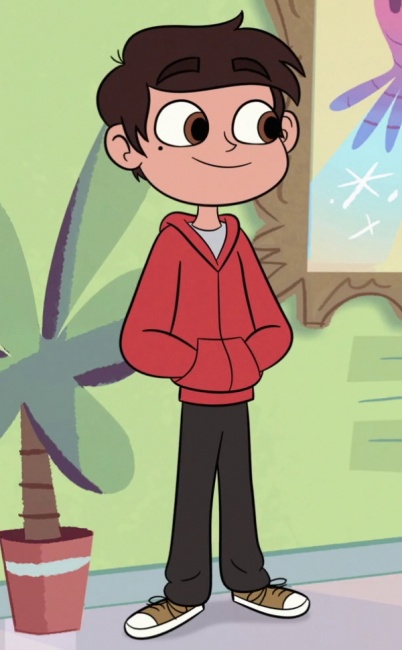Confessions of a Comic Book Guy is a weekly column by Steve Bennett of Super-Fly Comics and Games in Yellow Springs, Ohio. As the second season of She-Ra drops, Bennett looks at the He-Man character, and the baggage he carries into film development.
For starters, the word is a genuine antique (Merriam Webster says the "first known use of he-man was in 1758"), synonymous with strongman, now most commonly used as a term for a brutal dictator, and macho man. Which is most associated with either a decades-old song about wanting to become someone who is aggressively, unpleasantly masculine. Or the name of the late WWE wrestler Randy Savage whose ring persona was that of "a crazed, ego-maniacal bully." Things you really don’t want your brand associated with in a world increasingly concerned with toxic masculinity.
Then like with She-Ra, there’s the gayness. In that same interview, Stevenson said He-Man is "a very iconic character," neglecting to mention that like his sister he's also a gay icon. The difference between the two being She-Ra achieved that status by being a symbol of strength and independence her fans could take seriously. On the other hand, He-Man's perceived gayness is considered campy, over the top, farcical; just Google "He-Man Gay Icon," go to Images and see what you get.
The Urban Dictionary definition refers to him as the "original ambiguously gay hero," and includes the phrase "strangely homoerotic," as well as the following sentence: "A leather singlet, shaggy, but neatly groomed blonde hair, and briefs? You do the math."
And a quick Internet search found Why One Expert Says He-Man Is The 'Gayest Show Ever' (Fandom Files #14), "Masters Of The Universe" Is Actually A Tragic Gay Love Story Between He-Man And Skeletor and He-Man's Five Gayest Adventures. Even at He-Man.org, ""The Fansite Where You Have the Power!," there is a thread on the forum titled "Why does everyone think He-Man is gay?"
Just to be clear, I don’t see the gayness as being a detriment to a He-Man reboot, it's proven an absolute boon to She-Ra, so much as the cheese factor. Unless they go the ThunderCats Roar route (see "'ThunderCats Roar' In New Animated Series") and revamp it as a goofy comedy geared towards younger kids, the one thing that the property can’t afford to be seen as is silly. Because a lot of people already do think of it as being silly. To be successful these days, a property has to be seen as having some sort of substance; take the DuckTales reboot. It’s still very much a cartoon comedy, but the characters are taken more seriously and in the words of co-producer/ story editor Francisco Angones the show is "about a family. A real relatable family."
But as I see it the major problem with the He-Man property is that the idea of what a man is and can do has changed a lot since the 1980s. Instead of being simple, strong and physically perfect, the male protagonists of today's cartoons tend to be smart, kind and complex. Like:
Hiccup Horrendous Haddock III from How to Train Your Dragon
An intuitive and inventive scarecrow-skinny adolescent Viking with a prosthetic leg. Hiccup’s gentleness and empathy allowed him to bond with the dragon Toothless, bringing peace between humans and dragons, receive the respect of his people and earn the love of his best friend Astrid.
Milo Murphy, Milo Murphy's Law
A mild teen for whom everything that can go wrong will go wrong, spectacularly. Armed only with a well-stocked backpack he navigates each new catastrophe with optimism and enthusiasm never succumbing to self-pity. Instead of seeing himself as a victim, he embraces what makes him special and would never want to lead an ordinary life.
Steven Universe, Steven Universe
A friendly, short, squat big-hearted boy who’s a super strong human/alien hybrid, A empathic healer whose only weapon is a magical shield, he only fights to protect others and instead of using physical strength defeats his enemies by using compassion and understanding to turn them into friends. He also demonstrated the courage and self-confidence to be seen wearing makeup and women’s clothes when he had to fill in for a friend at a talent show.
Marco Diaz, Star Vs. The Forces of Evil
A sensitive, ordinary-looking Latino-American teenager who feels things deeply. The best friend of magical princess Star Butterfly, he’s a trained martial artist and skilled swordsman, an adolescent of action motivated entirely by a desire to care for others. In spite of his achievements he continues to struggle with self-esteem, body issues and what might be an anxiety disorder.
Like Steven Universe, Marco has pushed the boundaries of traditional gender norms. As previously established (see "Confessions of a Comic Book Guy - An Unexpected Princess"), using hair extensions and a flattering purple gown Marco went undercover at a repressive School for Wayward Princesses. There's nothing new about male characters dressing as women as a disguise (Bugs Bunny did it all the time), but the fact that Marco seemed quite comfortable in women's clothes was enough to garner a lot of media attention, Disney XD gets a male princess in Star vs. the Forces of Evil.
Since he hadn’t donned a gown since, I had assumed this to have been an isolated incident, that is until the 4th season episode "Butterfly Follies." While searching with Star for her missing mother they discover that the one who had been impersonating the Queen had been a man in drag. Upon which Marco gushes over his appearance ("This is the most flawless contouring I’ve ever seen") and the two trade makeup tips.
This generated exactly one headline, Star vs. The Forces of Evil is normalizing boys who like makeup, and as far as I can tell, created no controversy. I’d like to think that demonstrates the times are changing and the obvious is finally becoming accepted; that there’s more than one way to be a man. But if this freaks anyone out just remember; Elvis Presley wore eye-liner. Look it up.
The main reason I've revisited this subject is that after I posted that column, I discovered He-Man wasn't entirely "missing in action;" I had completely forgotten there was a He-Man movie in the works, probably because it's been stalled in development for years. But recently there was some movement on the project, though it was about a delay; 'Masters of the Universe' Movie Pushed Back to 2020. While "Adam and Aaron Nee have been attached to direct since January, with Noah Centineo reportedly being eyed to play He-Man and Prince Adam" those might be maybes. Because "Sony has no director or star listed." I do hope they do go with Centineo because I found it interesting they were casting a dark-haired actor (who identifies as being "half Italian, Dutch, and a little Native American") instead of the expected big buff blonde guy.
Because He-Man needn't necessarily be a big blonde Nordic type with a Prince Valiant haircut. According to Wikipedia, there were three prototypes for He-Man; a barbarian, a soldier and a spaceman, and that the barbarian themed one "was black-haired with a deeply tanned Eastern European or Middle Eastern appearance." So, maybe the rebooted He-Man could be a Mongol warrior soldier/spacemen. I kind of hope that he will.
The opinions expressed in this column are solely those of the writer, and do not necessarily reflect the views of the editorial staff of ICv2.com.



